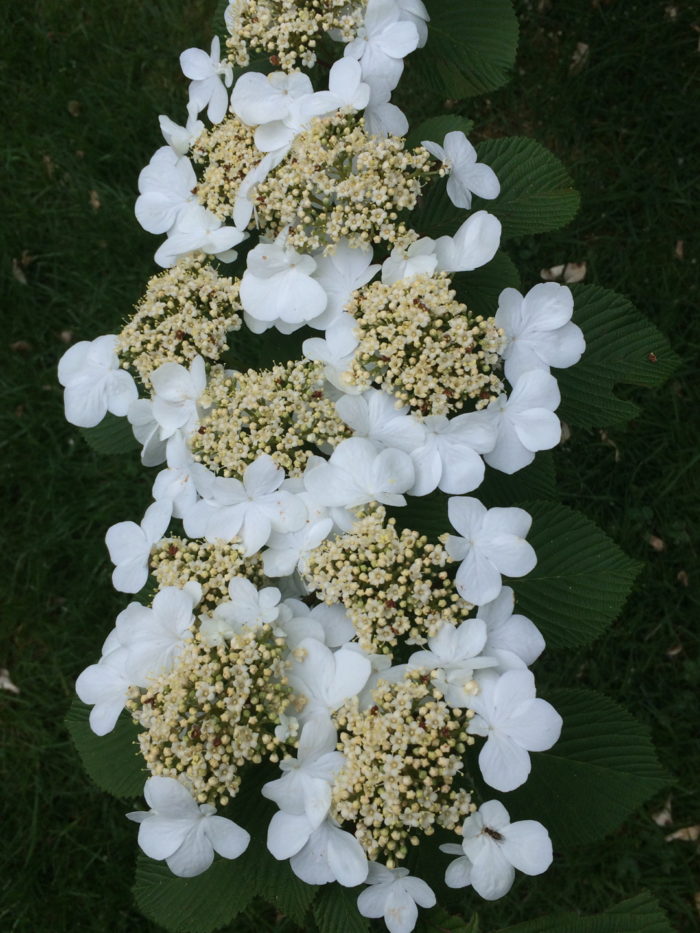
We’re back for another day of enjoying spring in Barbara Cain’s Boston garden.
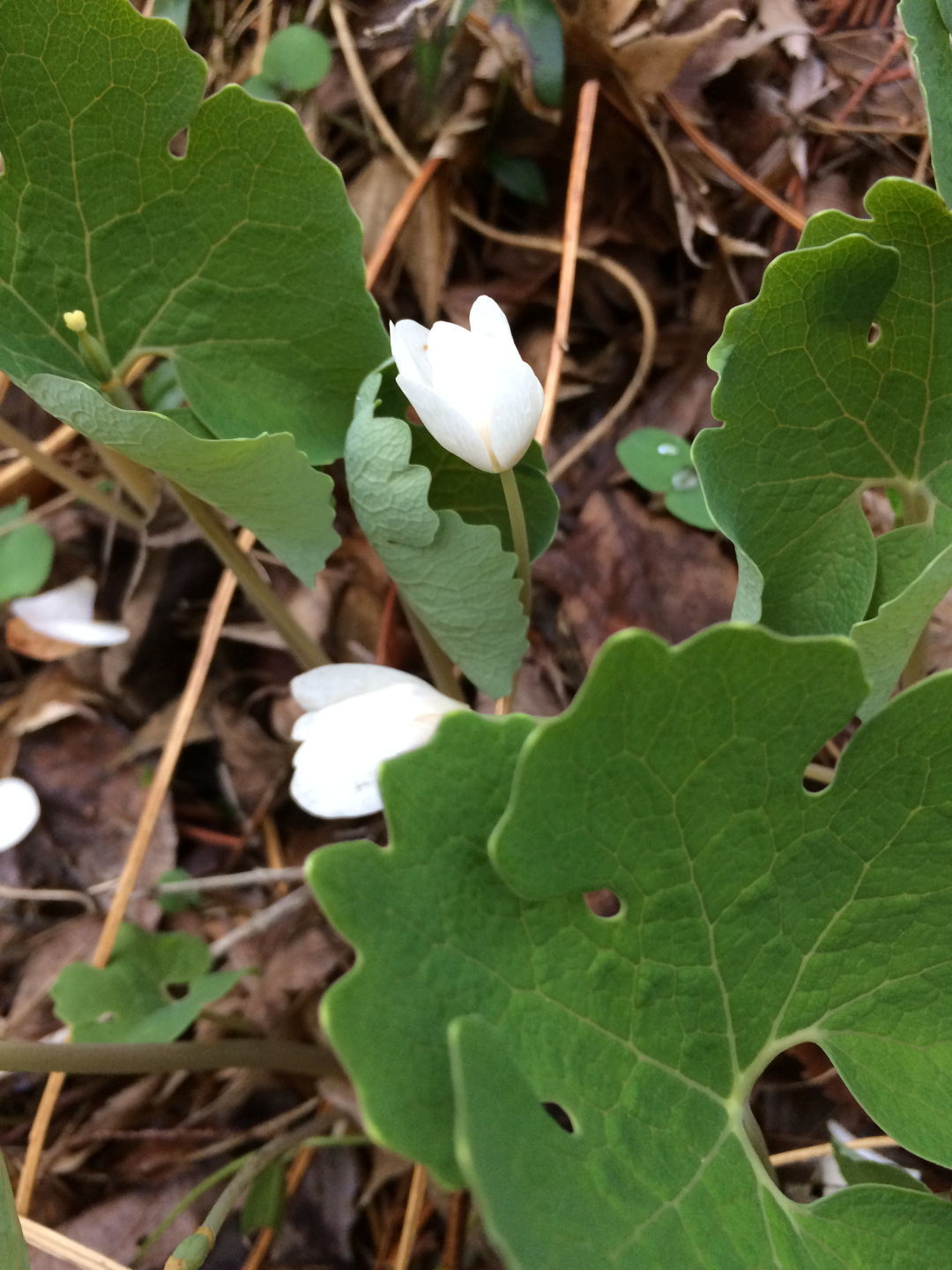 Bloodroot (Sanguinaria canadensis, Zones 3–8) is a common wildflower in the woodlands of eastern North America. The tiny white flowers are beautiful, but they only last a few days before the petals shatter.
Bloodroot (Sanguinaria canadensis, Zones 3–8) is a common wildflower in the woodlands of eastern North America. The tiny white flowers are beautiful, but they only last a few days before the petals shatter.
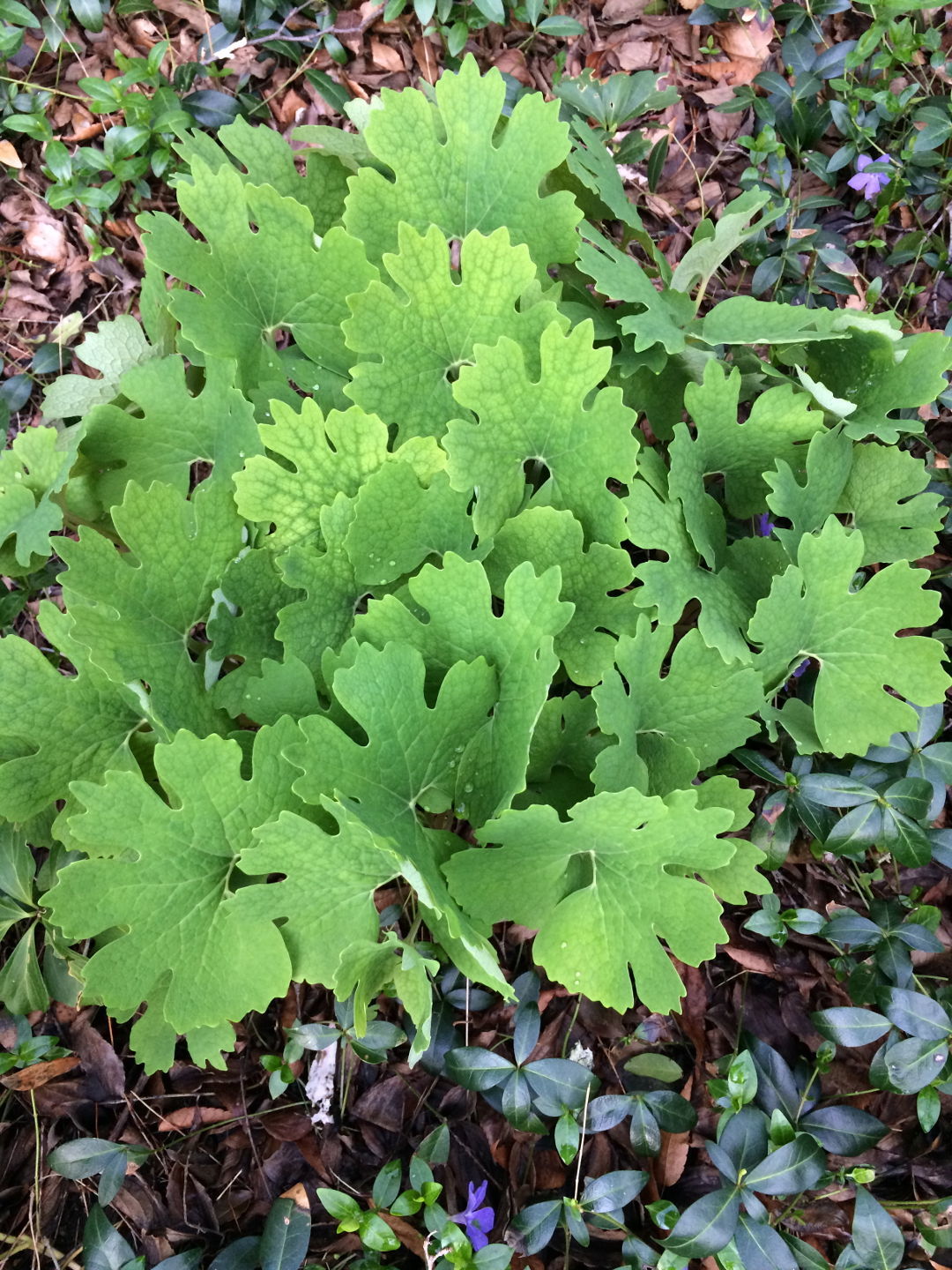 But long after the flowers have gone, the leaves of bloodroots are a beautiful addition to the garden, with each one interestingly lobed and textured. These leaves will disappear later in the summer when the plants go dormant, as this plant has adapted to grow in the spring before the leaves of the canopy have leafed out. Then it will wait out the shady summer and cold winter underground before growing and flowering again the next spring.
But long after the flowers have gone, the leaves of bloodroots are a beautiful addition to the garden, with each one interestingly lobed and textured. These leaves will disappear later in the summer when the plants go dormant, as this plant has adapted to grow in the spring before the leaves of the canopy have leafed out. Then it will wait out the shady summer and cold winter underground before growing and flowering again the next spring.
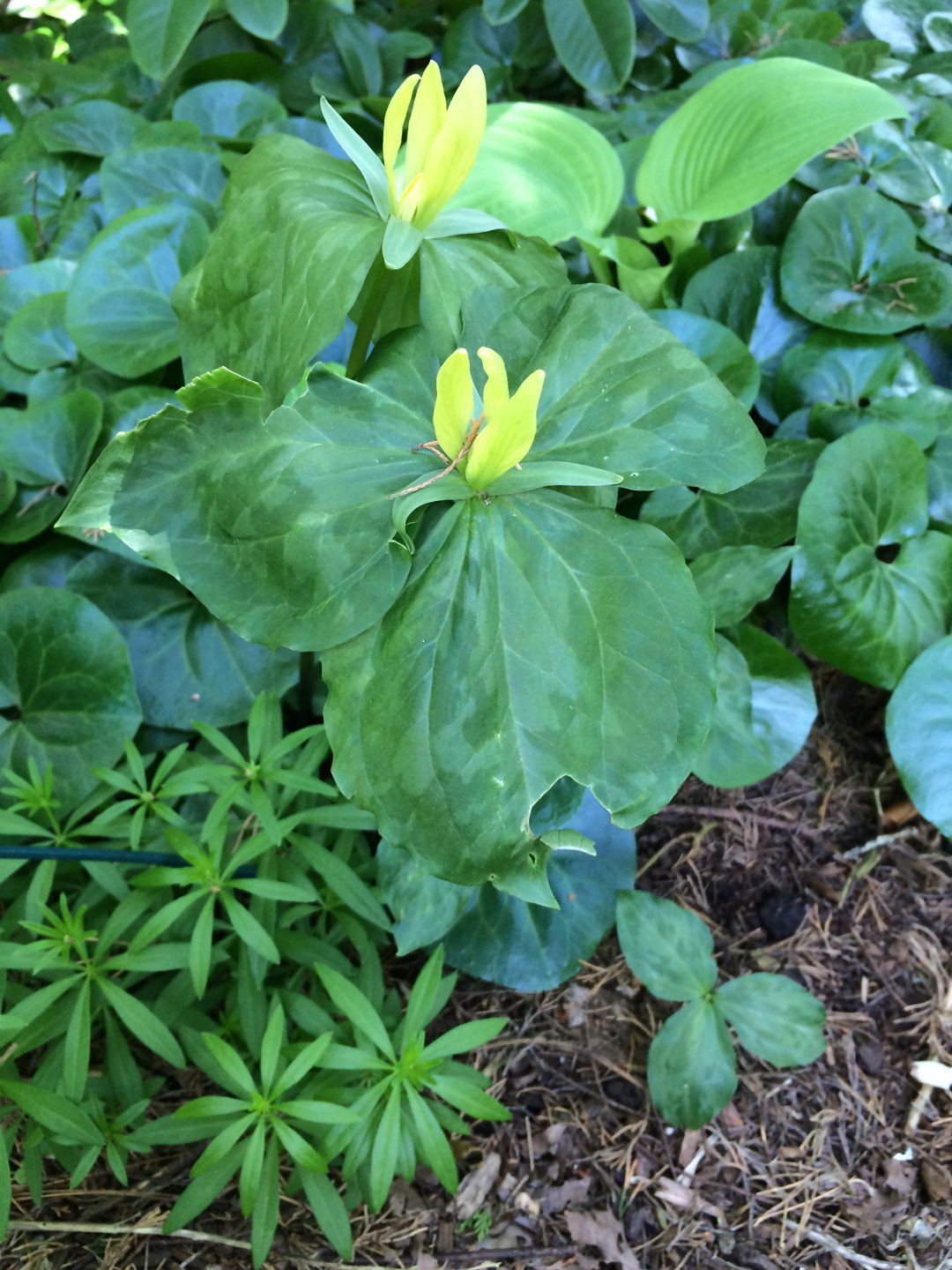 Yellow trillium (Trillium luteum, Zones 4–8) is another native wildflower, and one not nearly as commonly seen as bloodroot! It is in the group of sessile trilliums. Sessile, in botanical terms, means stemless, and it refers to the fact that the flowers of this group of trilliums are directly on top of the leaves rather than growing up on a stem above the leaves like some other trilliums. Many of the trilliums in this group have beautifully patterned leaves, and this particular species boasts the bonus of a lemony scent!
Yellow trillium (Trillium luteum, Zones 4–8) is another native wildflower, and one not nearly as commonly seen as bloodroot! It is in the group of sessile trilliums. Sessile, in botanical terms, means stemless, and it refers to the fact that the flowers of this group of trilliums are directly on top of the leaves rather than growing up on a stem above the leaves like some other trilliums. Many of the trilliums in this group have beautifully patterned leaves, and this particular species boasts the bonus of a lemony scent!
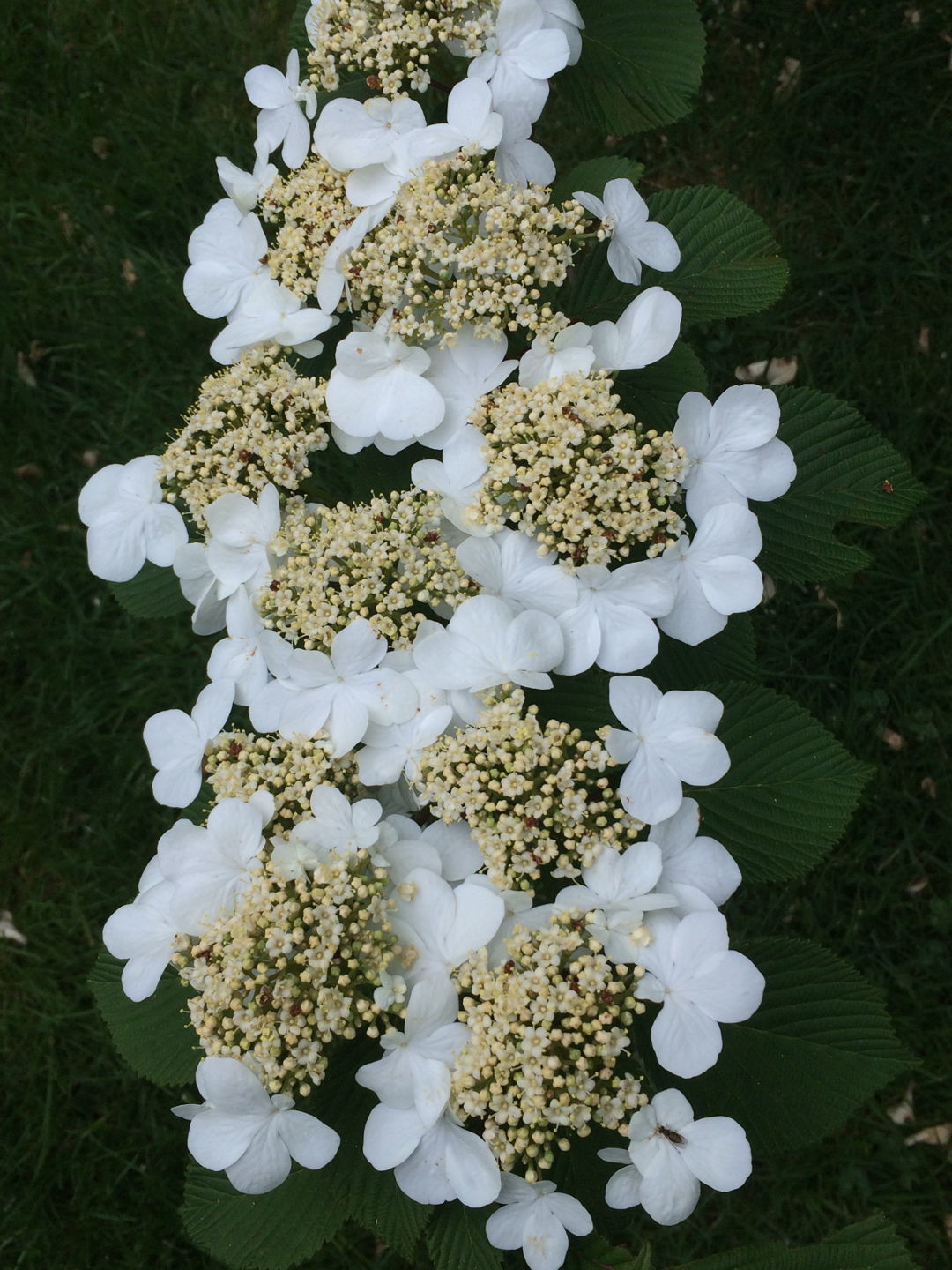 Flowers of the doublefile viburnum (Viburnum plicatum f. tomentosum Zones 5–8). Each head of flowers is made up of two types of blooms: a ring of sterile flowers with large, showy, white petals around the outside, and a big mass of much smaller fertile flowers in the middle. The showy sterile blooms attract insect pollinators to pollinate the fertile blooms in the center.
Flowers of the doublefile viburnum (Viburnum plicatum f. tomentosum Zones 5–8). Each head of flowers is made up of two types of blooms: a ring of sterile flowers with large, showy, white petals around the outside, and a big mass of much smaller fertile flowers in the middle. The showy sterile blooms attract insect pollinators to pollinate the fertile blooms in the center.
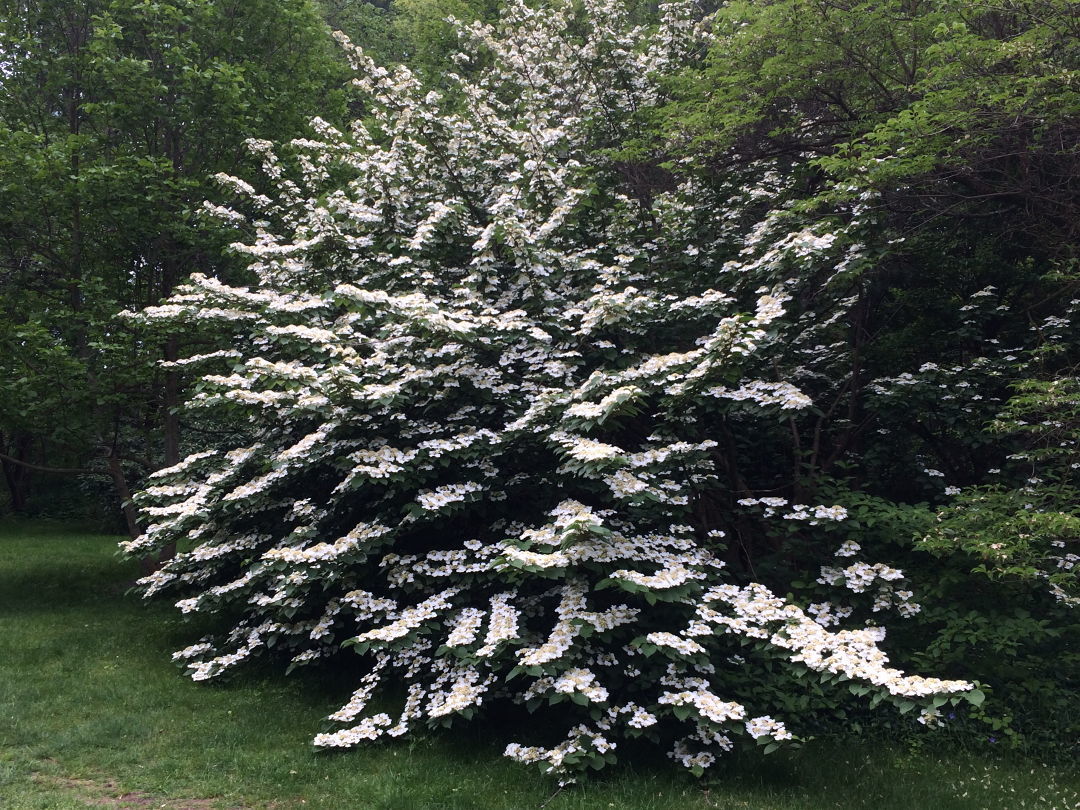 The doublefile viburnum in full bloom. This is such a beautiful shrub, with each branch dripping with flowers in the spring.
The doublefile viburnum in full bloom. This is such a beautiful shrub, with each branch dripping with flowers in the spring.
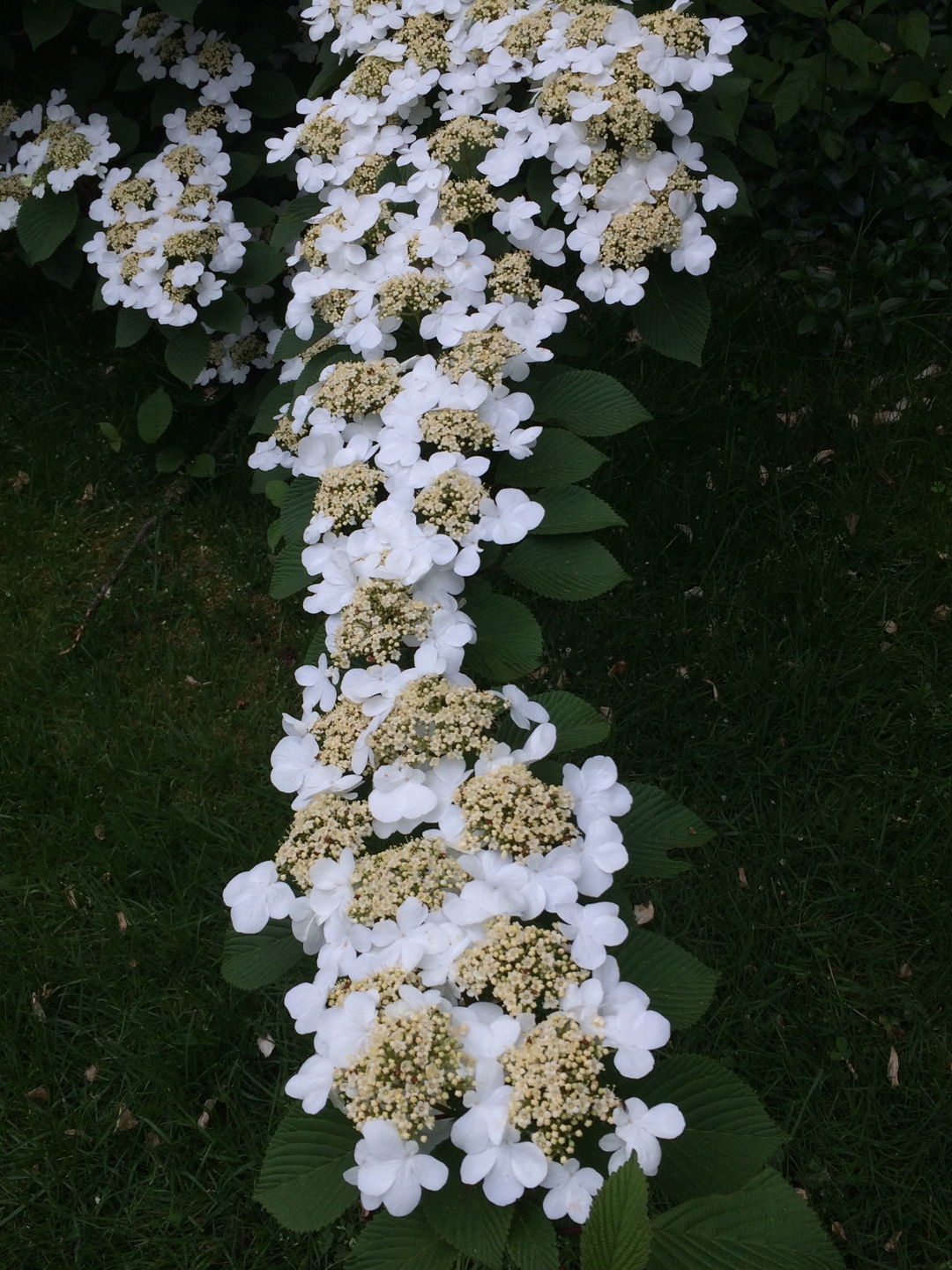 A branch of the viburnum completely covered with blooms. There are selections of this species that have all sterile flowers and so bloom in big white snowballs. Both are beautiful; which one you prefer to grow is just a matter of taste.
A branch of the viburnum completely covered with blooms. There are selections of this species that have all sterile flowers and so bloom in big white snowballs. Both are beautiful; which one you prefer to grow is just a matter of taste.

 Last August, Barbara took these photos on the Isle au Haut in Maine, and I haven’t had the chance to share them on the GPOD until now. Here, a whole cloud of monarch butterflies feeds on thistle flowers. If you want to enjoy monarch and other butterfly displays like this in your garden, remember to avoid using insecticides and to plant a wide diversity of mostly native plants to provide food for the caterpillars and adults.
Last August, Barbara took these photos on the Isle au Haut in Maine, and I haven’t had the chance to share them on the GPOD until now. Here, a whole cloud of monarch butterflies feeds on thistle flowers. If you want to enjoy monarch and other butterfly displays like this in your garden, remember to avoid using insecticides and to plant a wide diversity of mostly native plants to provide food for the caterpillars and adults.
Have a garden you’d like to share?
Have photos to share? We’d love to see your garden, a particular collection of plants you love, or a wonderful garden you had the chance to visit!
To submit, send 5-10 photos to [email protected] along with some information about the plants in the pictures and where you took the photos. We’d love to hear where you are located, how long you’ve been gardening, successes you are proud of, failures you learned from, hopes for the future, favorite plants, or funny stories from your garden.
If you want to send photos in separate emails to the GPOD email box that is just fine.
Have a mobile phone? Tag your photos on Facebook, Instagram or Twitter with #FineGardening!
You don’t have to be a professional garden photographer – check out our garden photography tips!
Do you receive the GPOD by email yet? Sign up here.

















Comments
Even though I have a yellow trillium, I am a bit abashed to admit that I never particularly focussed in on the stemless aspect to the flower. Nice to not only enjoy the pictures on gpod but also to gain some knowledge!
Love it all, especially the yellow trillium and that gorgeous viburnum - Spectacular!!! Thanks for sharing your wonderful garden.
Good to see the healthy thriving photos of the Bloodroot! And I learned something about them here. I used to have one in another garden and think I lost track of it because I didn't realize it had gone dormant for the summer, and must have accidentally planted on top of it. The photos of the butterflies clustered together were amazing- I started to read "on the Isle of..." and I assumed it was on some tropical island- and surprised to learn they were in Maine!
PS... I saved your photo and info on Bloodroot to my files! Thanks!
Psyched to see the doublefile viburnum. I planted one last fall- it didn’t bloom this spring... Also planted the Snowball Viburnum which bloomed itself silly ... Love these spectacular plants !
Log in or create an account to post a comment.
Sign up Log in